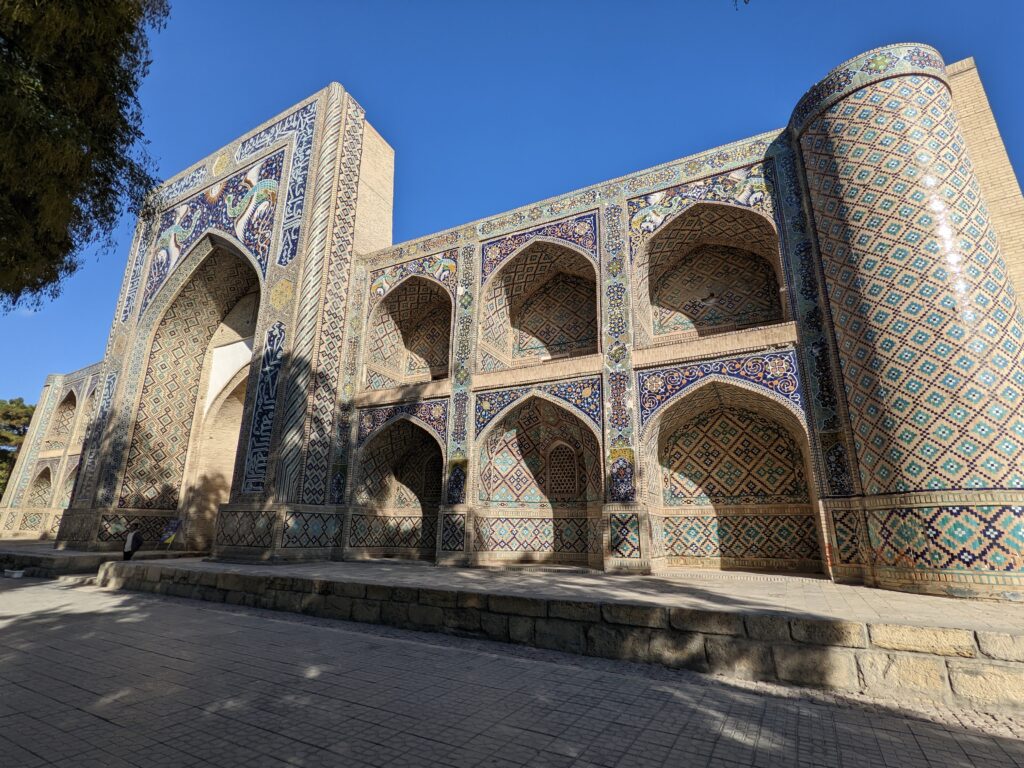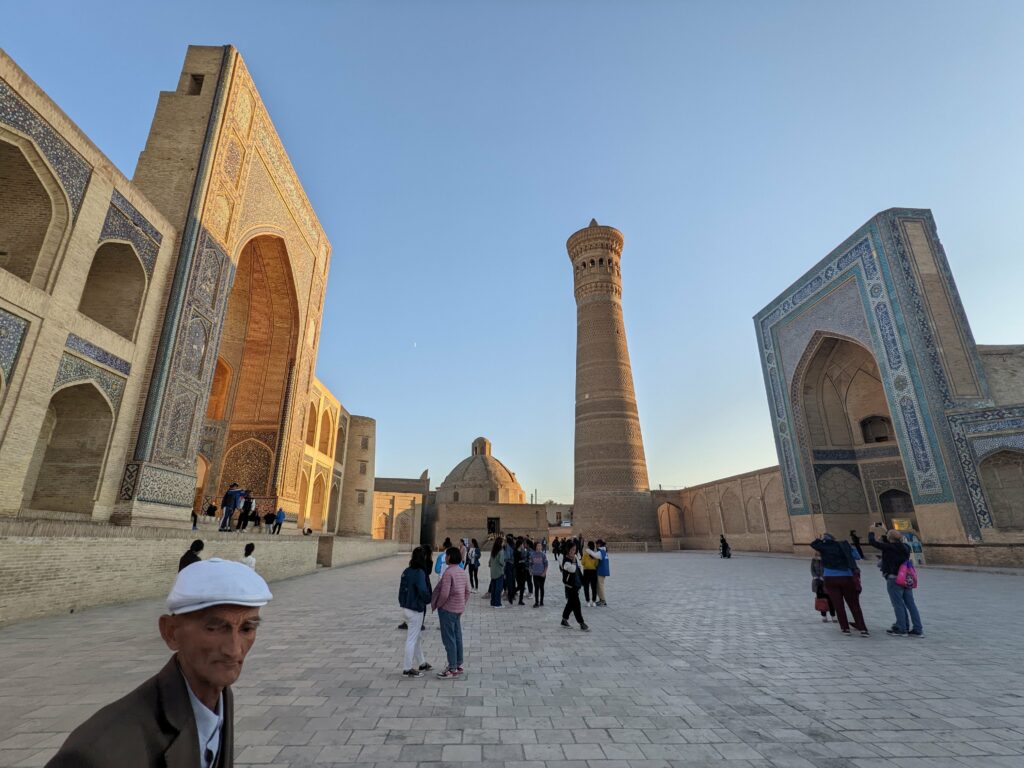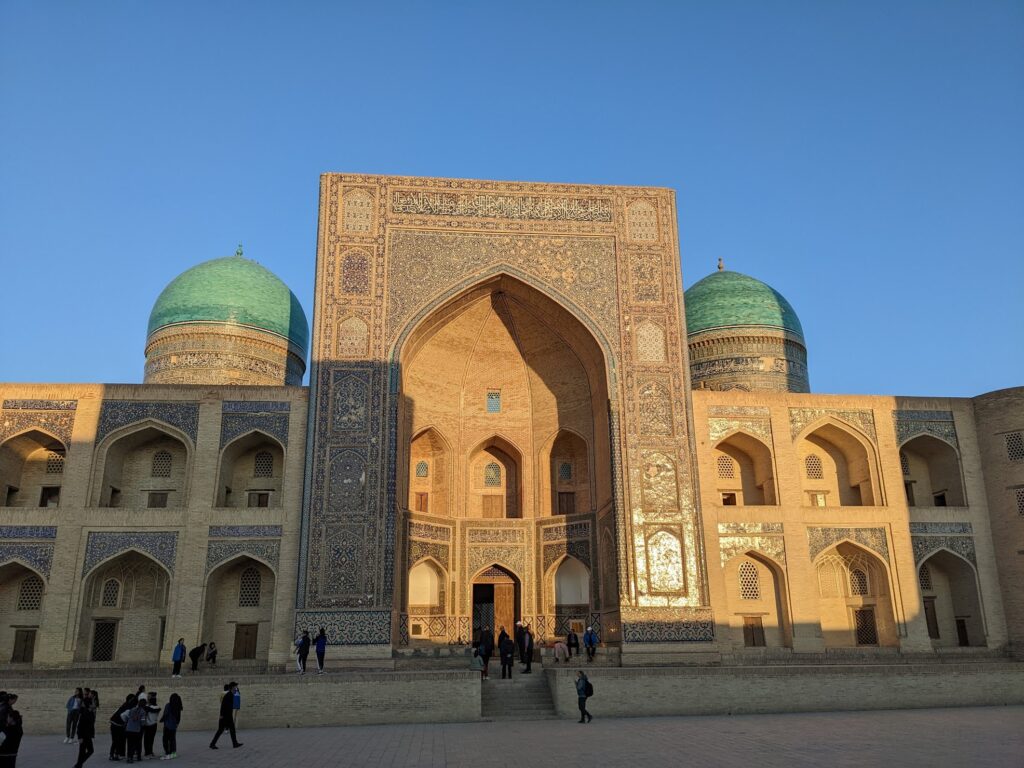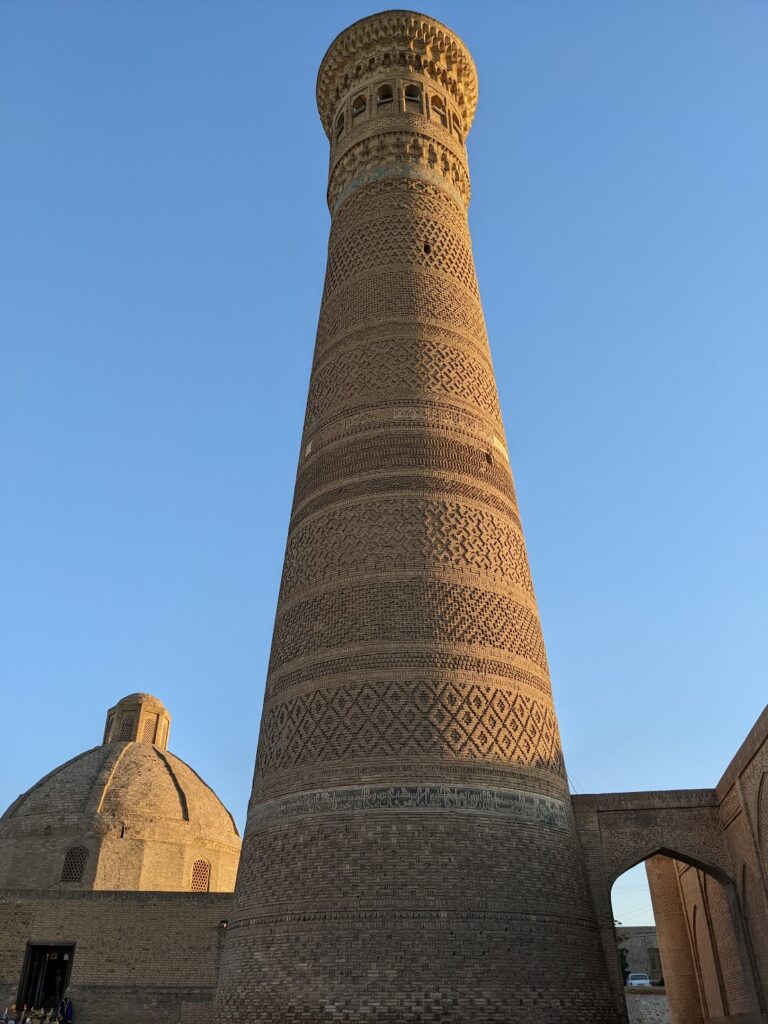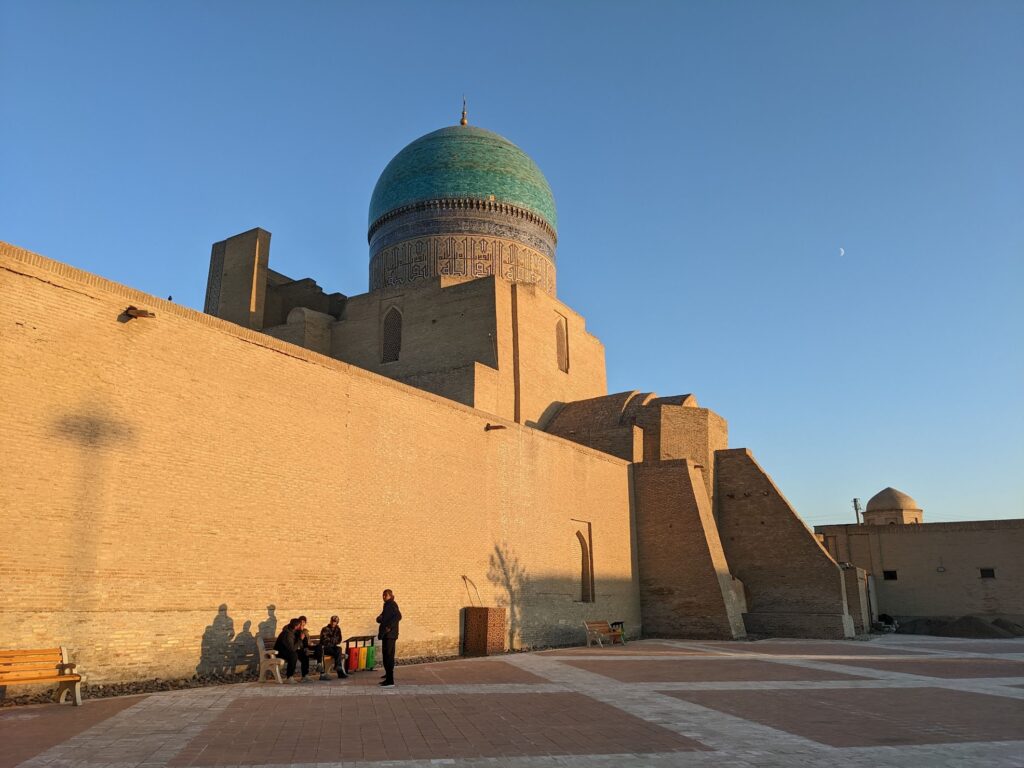Although we didn’t manage to get tickets for the high speed train from Khiva to Bukhara, I was still pretty happy with our spacious seats and table on our seven-and-a-half-hour journey on the slower train. Apparently tour groups often block book tickets, which meant that the first two carriages of our train were full, while ours was half empty.
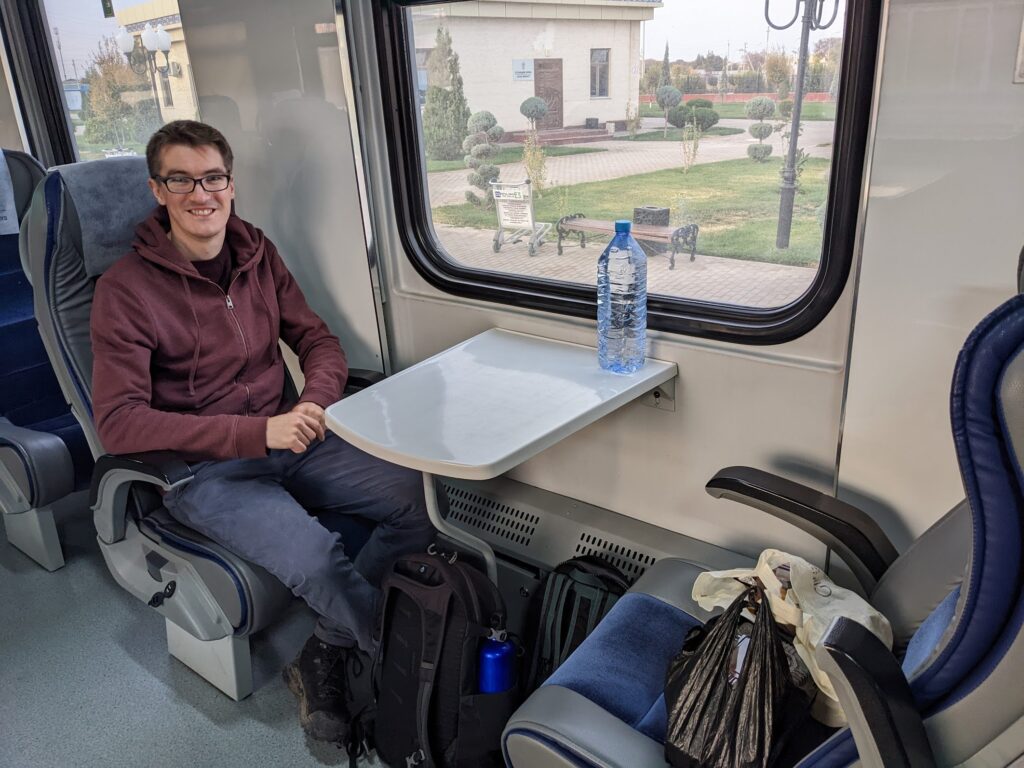
Fully embracing travelling slowly, we happily spent the journey napping, writing, eating, and crucially not planning how to get between the train station and our B&B.
We pulled into Bukhara train station and ran the normal gauntlet past the crowd of taxi drivers. One particularly persistent driver followed me across the station forecourt (he only ever spoke to me, not Sara), until Sara told him in no uncertain terms that we didn’t need a taxi. I’m guessing this broke a few social norms, but it certainly did the trick.
The next step was to find our way onto the right bus/marshrutka, but we couldn’t find the bus we thought we wanted, and explaining our route through hand gestures was proving difficult. Eventually, a local teenager took pity on us and showed us onto the right bus (he was also going the same way). He introduced us to another English speaking friend, and en route to the old town we covered topics from the UK’s energy crisis to Arsenal’s position in the Premier League.
Bukhara’s Lyab-i Hauz is a plaza in the centre of the old town containing one of the few remaining communal pools, which used to provide water for drinking and bathing to the city’s inhabitants. The plaza was surrounded on nearly every side by beautiful medressas, sparkling in the sunshine in all their restored beauty, and is still frequented by wizened old men (known locally as aksakal, or white beards) sipping tea while putting the world to rights.
Beyond these grand buildings, the old town extends out to what’s left of the original mud-and-brick city walls via a maze of alleyways. We spent some time meandering through these tiny streets on our way to the Chor Minor, a stunning Indian-style building with four towers, each uniquely patterned and topped with vivid turquoise tiling. Although we’d seen the building referred to as a medressa and the towers as minarets, apparently it was actually a gatehouse to a since destroyed medressa, but today only houses a small souvenir shop.
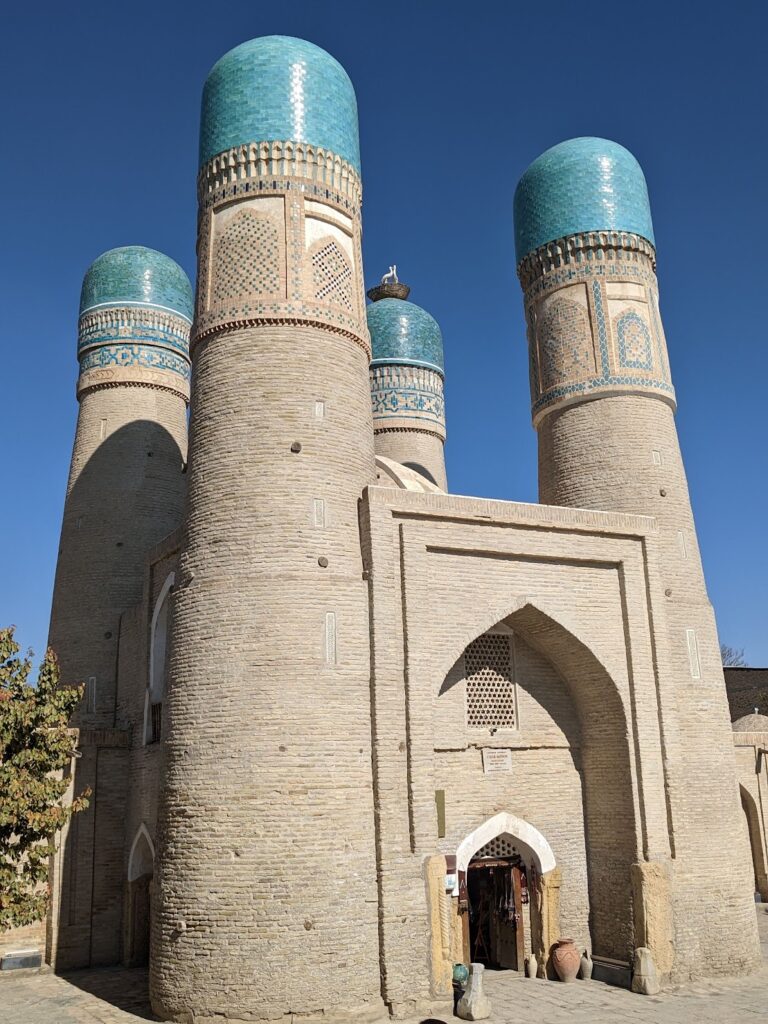
While the handful of bazaars in the old town were mostly dedicated to souvenirs and clothing, the real action seemed to take place at the central market, confusingly located just beyond the city walls. Even in the late afternoon, this market was still bustling with stalls selling fresh produce, spices, textiles, and seemingly anything else you could possibly need. We particularly liked the freeloading birds to which the seed sellers seemed to have turned a blind eye (below right).


On the way back to the old town we popped into the Ark of Bukhara, a huge fortress barely within the city walls where the Khan would have lived and received visitors. Just inside the Ark’s entrance was the Juma (Friday) Mosque, fronted by a row of intricately carved wooden pillars (below left). A few minutes down the road from the Ark was the Zindan (city jail). Back in the days of Queen Victoria, this jail held two English diplomats in its notorious bug pit (below right), along with a handful of rats, scorpions and goodness knows what else. These two unfortunate souls were sent on separate missions from England, but had both managed to offend the Khan upon arrival in Bukhara, and were promptly thrown into jail. A few years later they were each marched from the jail in front of huge crowds, forced to dig their own graves, and beheaded. Needless to say, our levels of politeness and respect skyrocketed prior to leaving the jail.
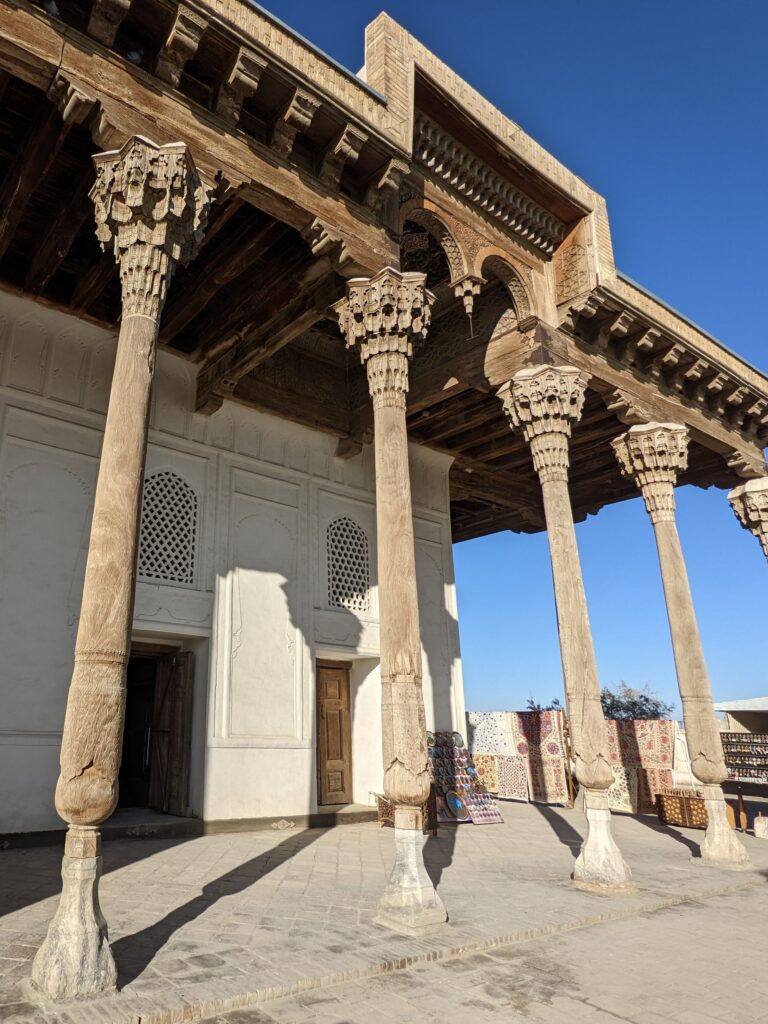

It felt like Bukhara had a seemingly endless number of blue-tiled, sand-coloured Islamic buildings extending north-west from the Lyab-i Hauz. Our highlights were the Kalan mosque with its 47m minaret, and the Mir-i-Arab Medressa opposite featuring twin turquoise domes either side of its colossal facade. And just when we thought we’d seen and photographed everything, the light would change, and we’d take another lap.
While Bukhara isn’t internationally renowned for its cuisine, we were keen to try some local dishes while in town. First up was MANTUXONA P.M.K, a manti (dumpling) restaurant located just beyond the central market. Our table was set inside an arched compartment, but some other tables were even more private, with a curtain shielding them from the rest of the restaurant. I’d tried and failed to translate the Uzbek menu using my phone, so we took a partially-informed guess and fortunately it worked out (with a bit of help from the waiter). The manti themselves consisted of minced beef, onion and fat inside a thin, pasta-like parcel, and topped with butter. While I’m glad we tried them (and they were really tasty when eaten alongside the fresh herbs from our salad), they didn’t quite fill the place in our hearts reserved for khinkali.


Another popular lunchtime dish is Plov, an oily and slightly sweet rice and vegetable dish, topped with pulled meat. And where better to eat it than The Plov, a large restaurant located just outside the old town, where we snagged a table just as it became vacant. I think this is the first time either of us have tried horse meat, and despite our initial reservations, this meal was by far our favourite in Bukhara. Judging by the restaurant’s huge popularity with locals and tourists alike, we weren’t the only ones.
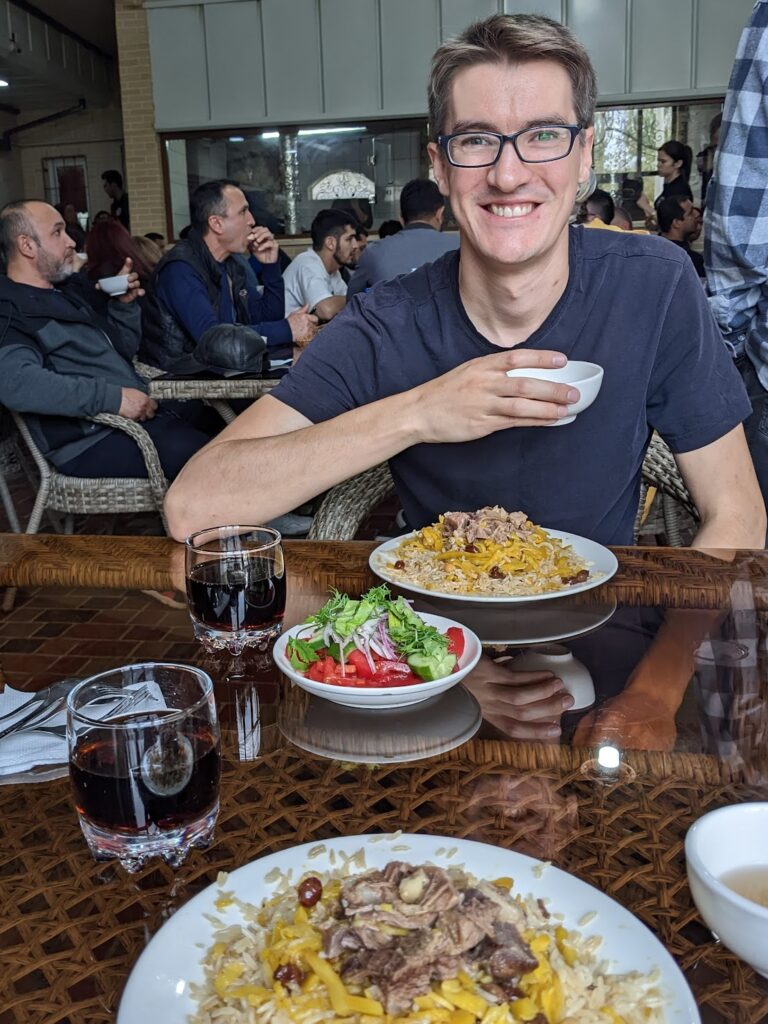
Taking the bus back to the train station might sound like a straightforward task given that we’d already done it once in the opposite direction. Still, we couldn’t find our bus number listed at the bus station where we were hoping it would stop, and only once we had begun to walk further down the road did we see one sail past us. It wasn’t far to the next stop though, and when the next bus pulled up, we were greeted once again by the English speaking teenager from 4 days ago – what are the chances?! We covered more world events on our way to the train station, before wishing him luck in his upcoming English exam.
The next stop on our journey will be Samarkand, a city almost synonymous with the ancient Silk Road, and we couldn’t wait to see it with our own eyes.

